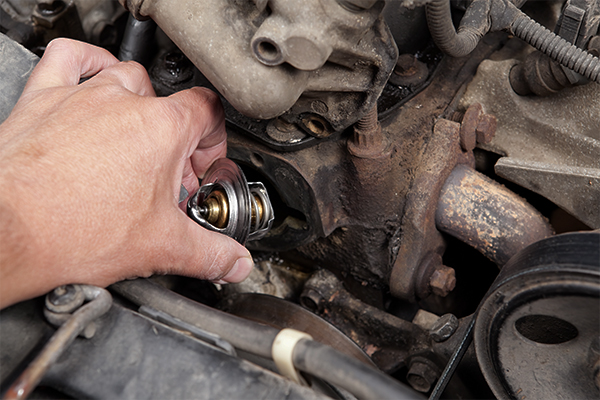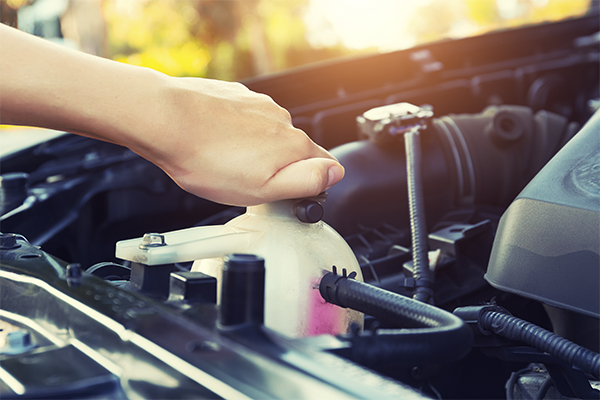Whenever internal combustion engines are running, they're generating heat, and once the engine reaches its optimal operating temperature, that excess heat has to be removed to prevent the buildup of high temperatures that will damage an engine. The task of delivering cooler temperatures to the engine falls to the radiator. Here's how it gets the job done, what can go wrong, and why your vehicle may have more than one radiator.
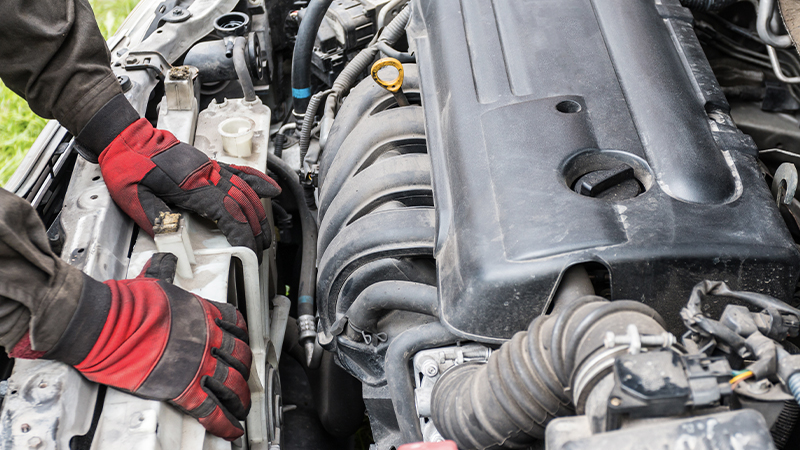
A typical radiator and fan assembly located at the front of the engine compartment | Source: Getty
What does a car radiator do?
The most basic explanation is that a radiator is a heat exchanger. It transfers heat from one spot to another – in this case from the coolant to the air – and it is an integral part of a vehicle's pressurized cooling system.
Most modern radiators are constructed of aluminum for the fins and core, and plastic tanks on the side, while radiators in older vehicles were predominantly steel because of its availability, strength and durability. The radiator's design features thin, flat fins connected in a parallel fashion to flat tubes, all of which form a large, honeycombed, square or rectangular-shaped assembly that sits behind the vehicle's front grille.
As coolant circulates through and around the engine, excess heat transfers from the engine block to the coolant, raising said liquid's temperature. The coolant is then pumped into one side or the top or bottom of the radiator, and begins flowing throughout the radiator's tubes. As it does, a fan (or fans) behind the radiator draws cool air from outside the vehicle over the radiator's fins, causing the heat to move from the coolant to the air.
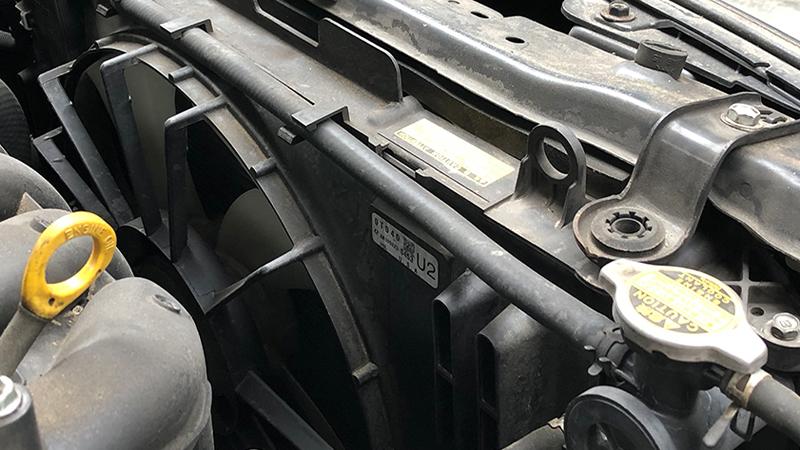
Radiator fans maximize air flow through the fins | Source: Lisa Kowite
The coolant, with its now-lower temperature, continues its journey through the radiator, leaves from the opposite side it entered, and returns to the engine where the process starts all over again.
What's inside the radiator
When everything is working as it should, coolant is the only thing inside the radiator. Also commonly referred to as antifreeze, there are two main reasons why this specially blended liquid is used in a vehicle's cooling system instead of being filled with just water.
First, water freezes at temperatures below 32 degrees, and if this were to happen inside an engine or the cooling system components, it could cause significant damage.
Second, using only water in a cooling system will lead to corrosion inside the metal radiator much faster than if antifreeze were used instead. Antifreeze contains chemicals that help prevent radiator corrosion, increase the boiling point, and lower the liquid's freezing point to more than 30 degrees below zero, as compared to water's freezing temperature.
Coolant needs to be replaced periodically, however. That's because its chemical properties change over time, reducing its protective properties. When this happens, the metal radiator can begin to corrode, generating a buildup of rust and sludge that eventually can damage the radiator and water pump's impeller, block or slow coolant flow and lead to vehicle overheating.
Learn more about how and why to remove this sludge from the cooling system with a radiator flush.
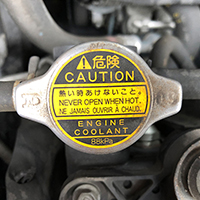
Only work on the cooling system when the engine is cool. Coolant is under pressure, and removing a radiator cap when the coolant is hot can cause personal harm.
COMMON CAR RADIATOR PROBLEMS
The cooling system can experience multiple types of problems, ranging from a blown head gasket that allows engine oil to mix with coolant to water pump failure which leads to overheating. The radiator is not immune from problems either. Here are a few common problems found in radiators:
- Cracks in the radiator: Modern radiators are typically made of aluminum and plastic. The advantages of using these materials include reduced cost and weight. However, over time they can also develop cracks. A quick visual inspection is usually all it takes to confirm this is the problem because you'll either see caked up, crusty coolant from a seep or a puddle under the radiator from a more severe leak. In either case, you'll need to replace the radiator.
- Holes in the radiator: Examine the radiator for signs that coolant is leaking from holes caused by stones or other objects impacting the radiator's surface. This can be a bit more challenging, as there will often be a condenser - a component of the A/C system that looks and functions much like a radiator - blocking the front view. A flashlight and telescoping mirror are handy tools during this inspection. If a hole is found, you'll need to replace the radiator.
- External debris buildup: Inspect the radiator's exterior periodically, looking for a buildup of bugs or other debris on the radiator's surface that can block air flow, leading to reduced radiator performance and overheating. Gently brush away any debris, being careful not to damage the radiator's aluminum fins. If no other damage is found, replacing the radiator is not necessary.
- Internal sludge from contamination: If sludge is found in the radiator when the cap is removed, you'll need to thoroughly flush the system. But first, find the problem that led to this condition and fix it.
Leaking radiators need to be replaced. For a temporary fix until it can be replaced, try one of the various products designed to help stop or slow radiator leaks.
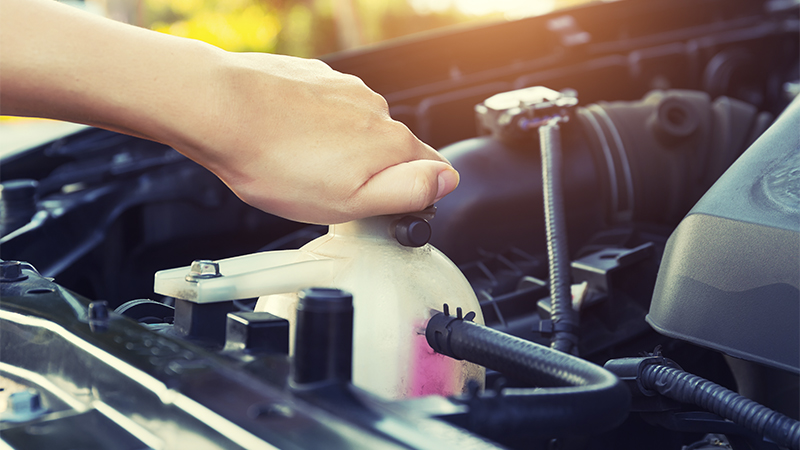
A low coolant level is an indication there could be a leak. | Source: Getty
Your vehicle might have more than one radiator
If you look closely at the radiator, you may notice a smaller, similar looking part mounted near the large one. In vehicles equipped with one, this is the transmission cooler. Its purpose is to cool transmission fluid by allowing that fluid to pass through, shed its heat to the outside air, and return to the transmission to repeat the process.
Some vehicles integrate the transmission fluid cooling into the vehicle's radiator, and in other vehicles, power steering fluid or A/C system components may be cooled through separate devices.
Another vehicle part on most vehicles that's essentially a third radiator is one that's not as readily visible or accessible as the main radiator at the front of the engine. It's the heater core, and it has an equally important role – providing the heat needed to defrost windows and keep passengers warm.
The heater core works by way of a blower motor forcing air over the core, pushing the now-heated air into the passenger compartment. Because the heater core shares coolant with the main radiator, a low coolant level in the cooling system can lead to there not being enough to supply the heater core and generate heat.
Usually only the main radiator requires preventive maintenance in the form of checking the coolant level and changing it at regular intervals.
If you suspect your radiator is damaged, check out our guide to replacing a radiator. It's a great project for beginners that only requires some basic tools and one afternoon.


